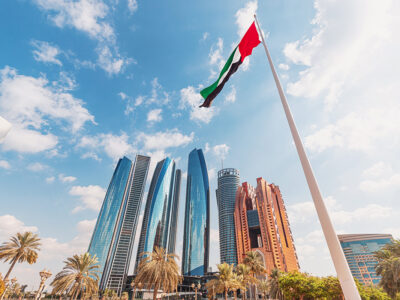Jet Airways and Etihad Airways have announced a major new turnaround strategy to return the Indian airline to profitability in three years.
The three-year plan, recently approved by the board, includes a series of critical measures, such as long-term network, fleet and product developments to optimise the airline’s domestic and international operations.
The plan will see new services to markets such as Europe, China, Australia and Southeast Asia, expanded frequencies to existing routes and additional codeshares.
Jet Airways’ two and three class aircraft product will also be enhanced and the seat count optimised on wide-body Boeing 777 and Airbus A330 aircraft.
In addition, the domestic business model will improve connectivity across India and worldwide, while removing complexity in product and fleet, including the standardisation and reconfiguration of the Boeing 737 fleet.
To initiate the three-year turnaround plan, the Jet Airways board and management team have already worked with auditors to clean up its balance sheet and write down overvalued non-cash assets.
Steering the Indian airline’s planned return to profitability will be its recently appointed CEO, Cramer Ball and COO Subodh Karnik (pending regulatory approval).
Chairman of Jet Airways, Naresh Goyal, who announced record loss of $360 million in the quarter ended March 31, said the Indian airline market has been challenged by factors such as a difficult economic climate, volatile fuel prices, and the rapid growth of low-cost carriers in India.
Indian airlines lost a combined $1.3 billion in the year to March, according to estimates from the Centre for Asia Pacific Aviation consultancy.
Goyal said their growth plans featured building on their strong international operations.
“Our international operations are already profitable and contribute 45 per cent to our total revenue. We will continue to build on this strong foundation as part of our three-year turnaround plan and increase the contribution to 63 per cent by 2015,” he said.
The two airlines will start a new marketing campaign this week, ‘Flying India Forward’, which highlights their collaborative offering for Indian travellers.
Together, Jet Airways and Etihad Airways operate more international flights from India than any other airline, and provide unrestricted opportunities to earn and redeem miles on their integrated frequent flyer programs.
The two airlines have been codeshare partners since 2008 and their relationship was strengthened in November 2013, when Etihad Airways received approvals to acquire a 24 percent stake in Jet Airways, marking it the first investment by a foreign carrier in India’s airline industry.
The wide-ranging partnership has numerous advantages for travellers, including enhanced connections across the world through an expanded codeshare agreement, and reciprocal ‘earn and burn’ rights and tier level recognition on the JetPrivilege and Etihad Guest frequent flyer programs.
Jet Airways and Etihad Airways also stand to benefit from cost savings and synergies in areas such as fleet acquisition, maintenance, product development and training, and continue to explore collaborative purchasing opportunities for fuel, spare parts, insurance and technology support.
James Hogan, president and CEO
of Etihad Airways, said: “India represents a considerable opportunity for
airlines worldwide, with more than 42 million international travellers reported
last year and impressive future growth rates predicted by IATA [International Air Transport Association]. The challenge
is ensuring that our industry is efficiently catering to rising demand, not
only in India’s major destinations, but also smaller cities that remain largely
unconnected and underserved.
“The Etihad Airways and Jet Airways partnership has
significantly improved connectivity between India and the UAE, and through our
combined network and codeshare partnerships with other airlines, the Indian
public has convenient access to destinations across the Gulf region, Middle
East, Africa, Europe and North America. We are also bringing more travellers
from these destinations to India, supporting the country’s aviation industry
and economy.”







